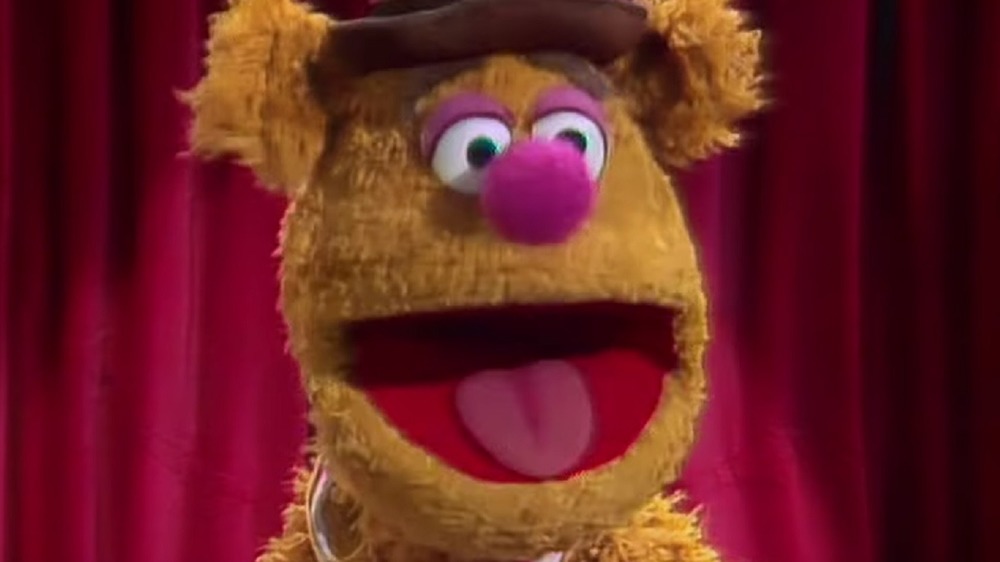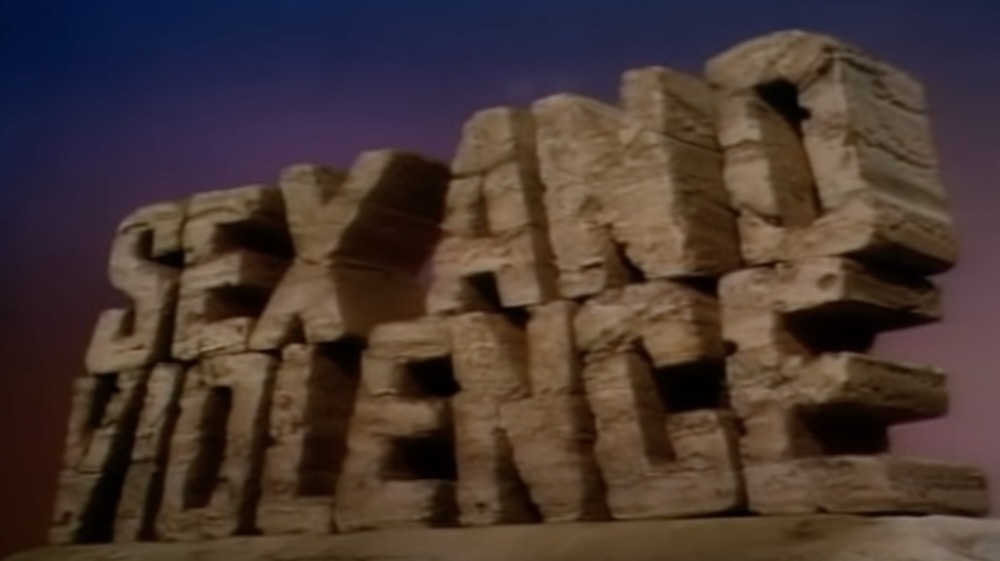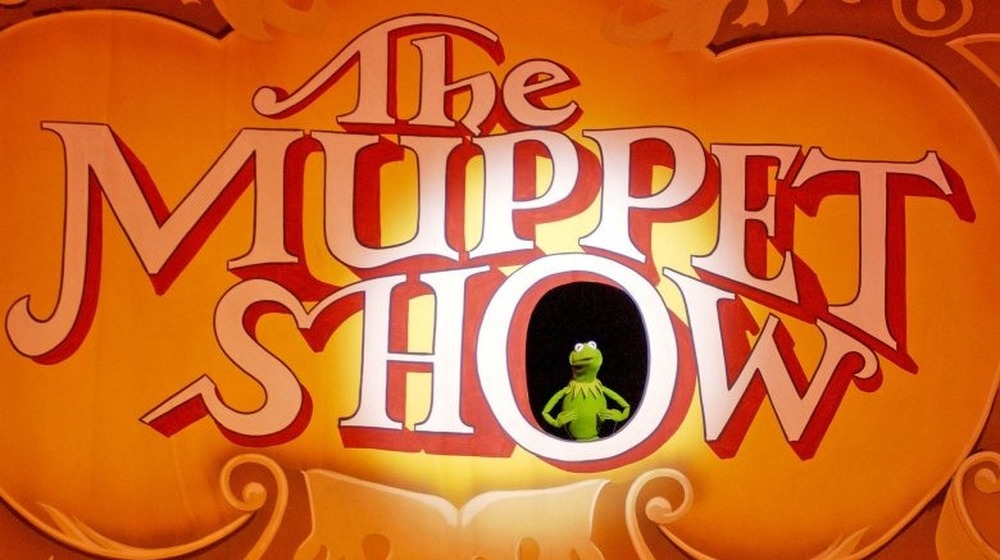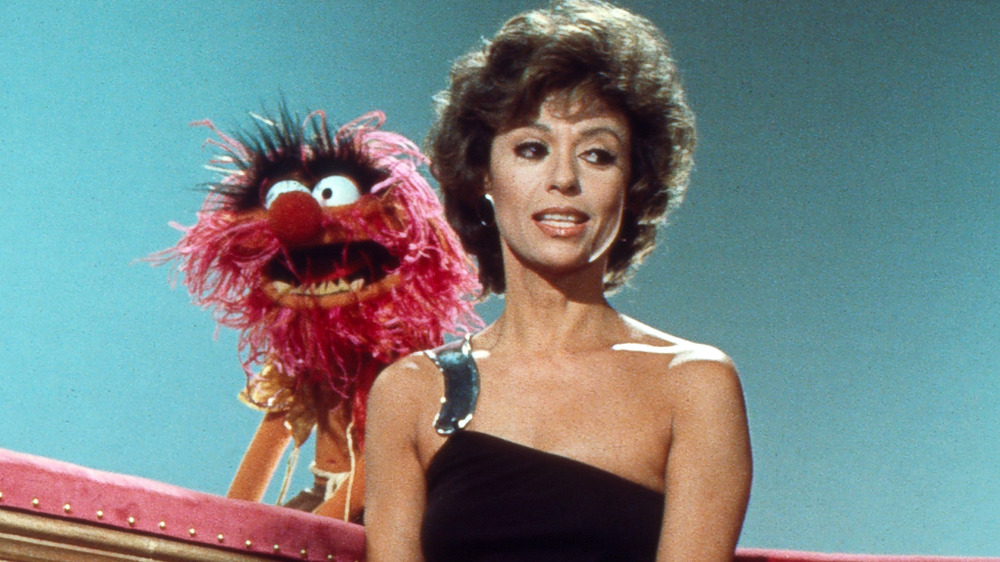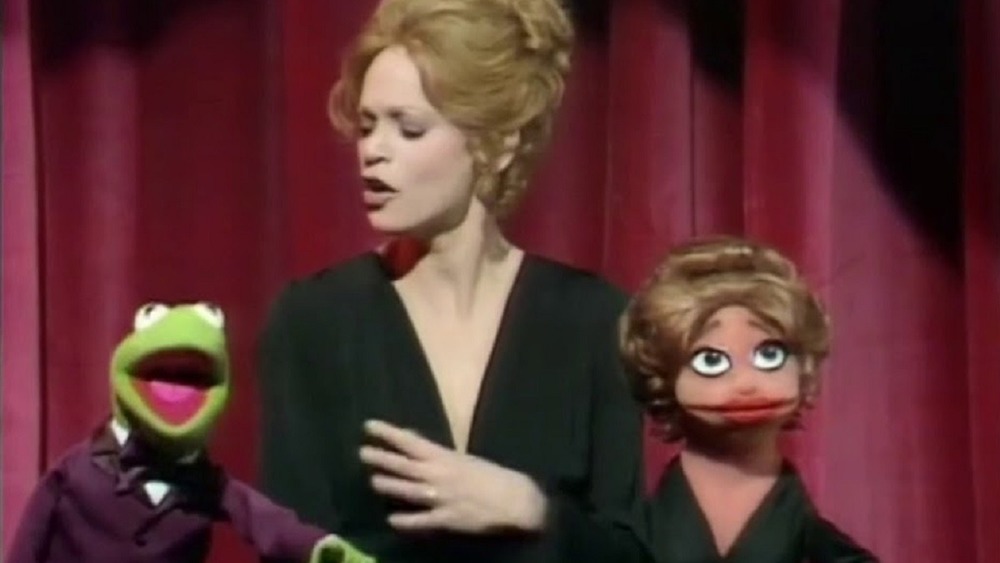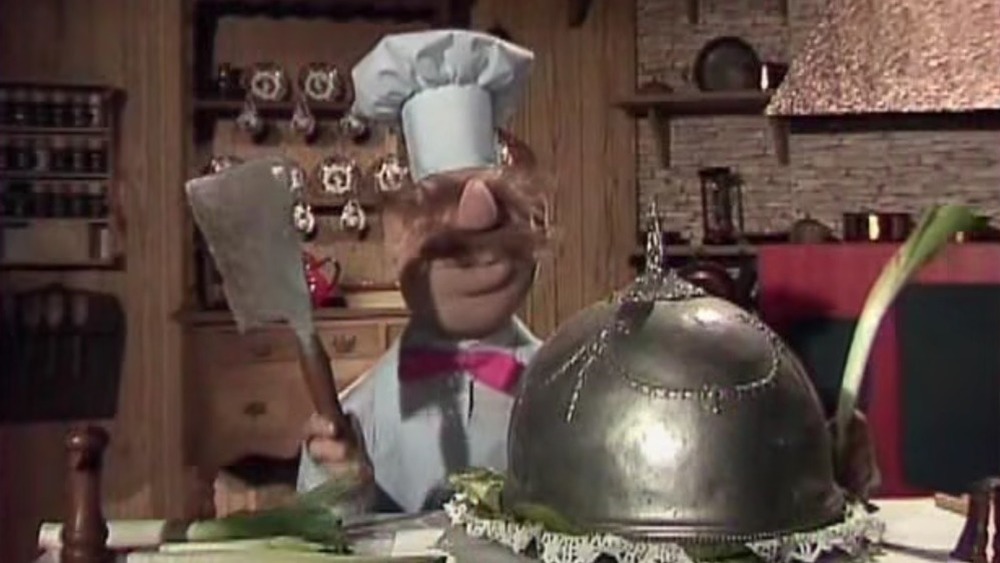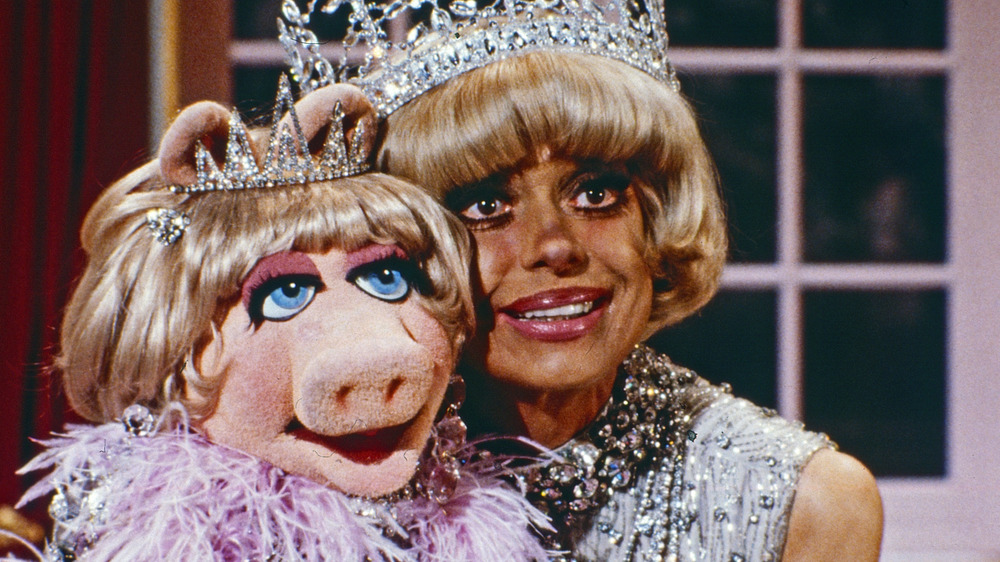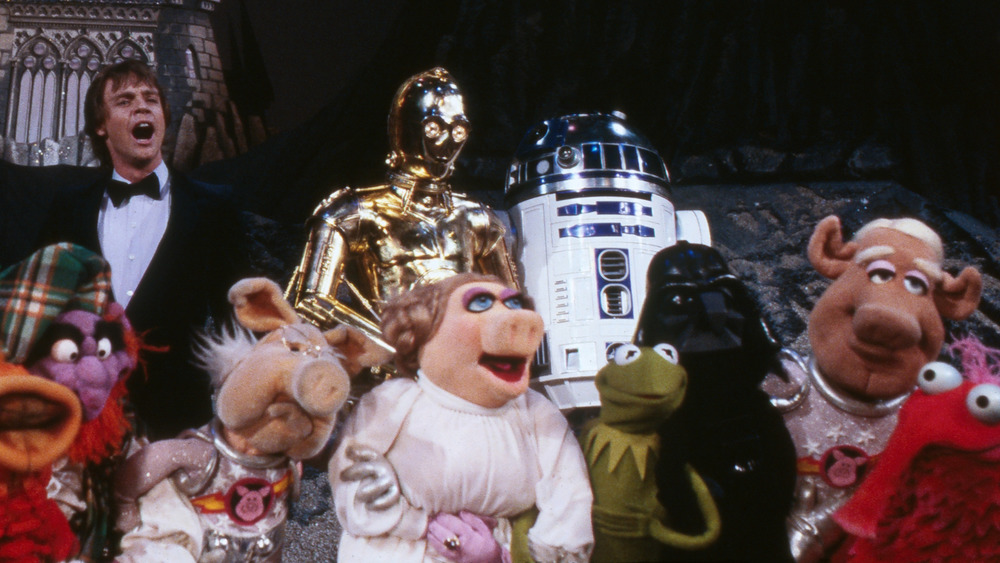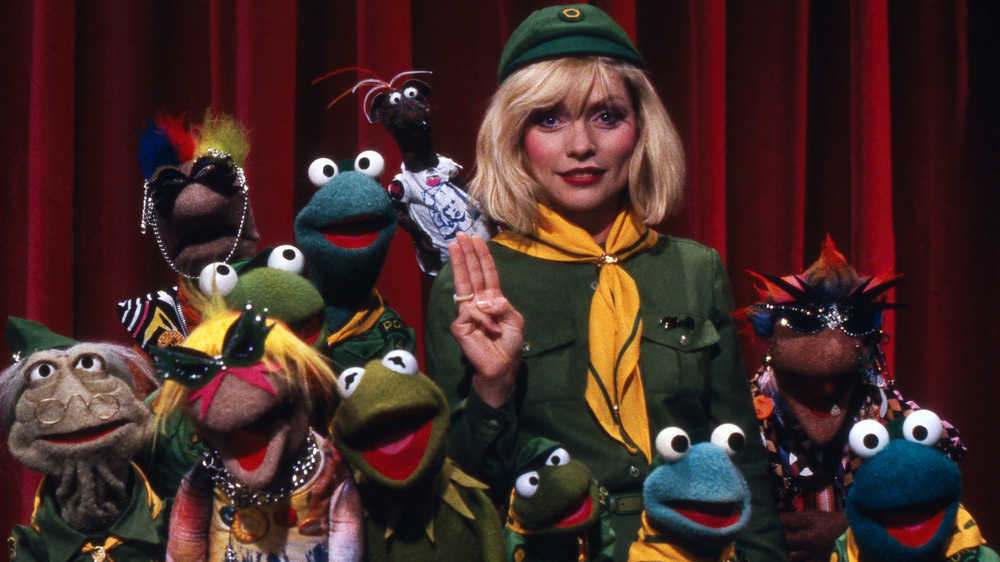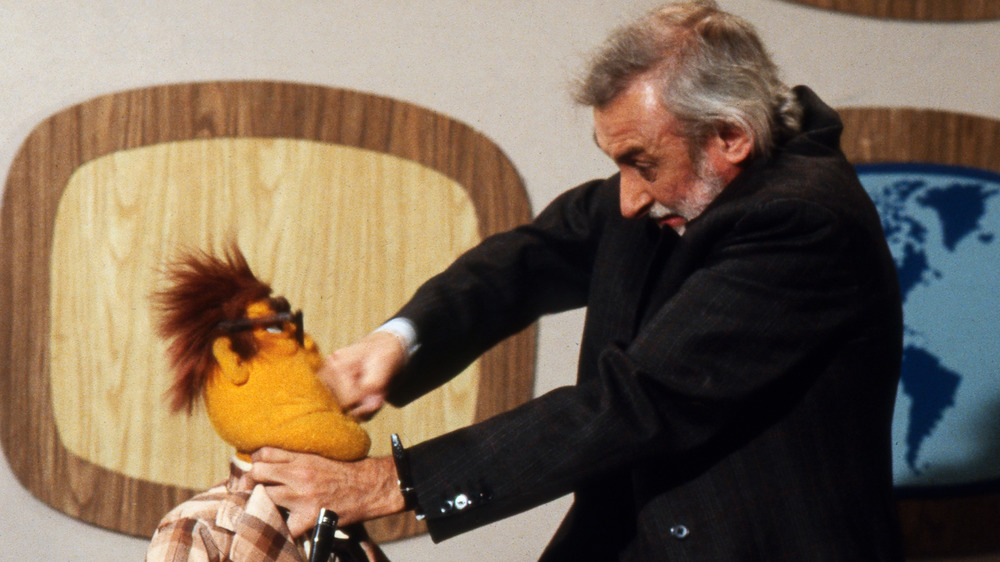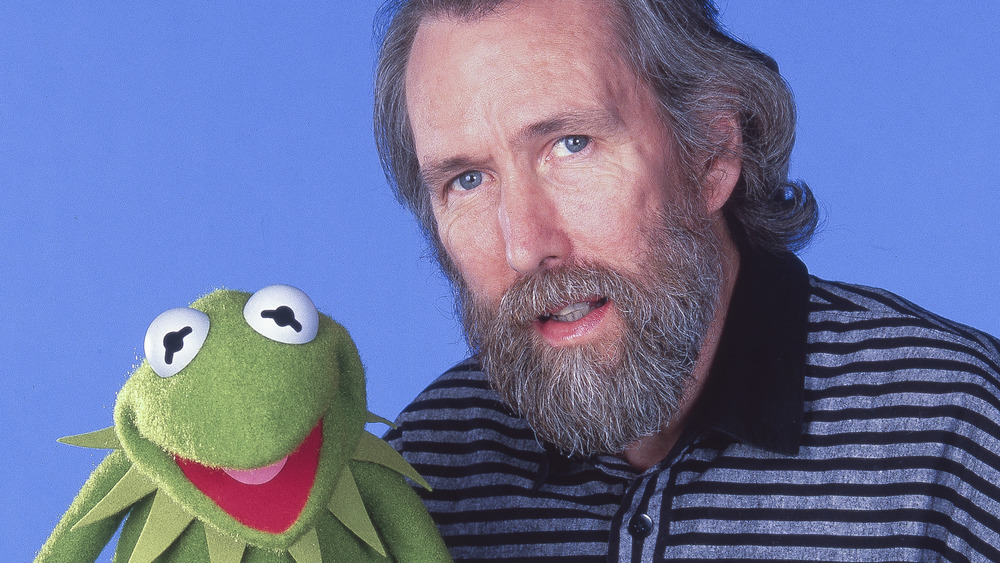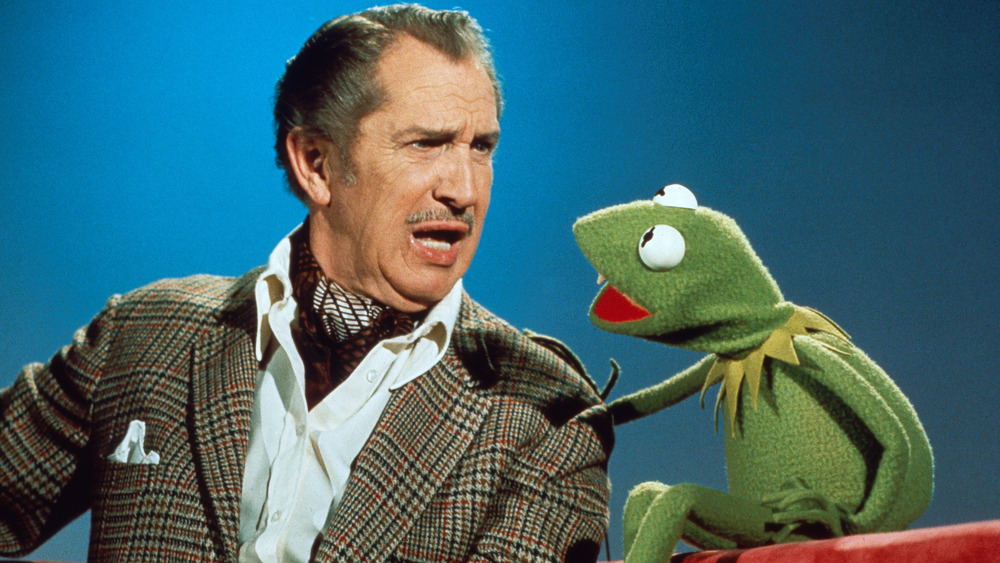The Untold Truth Of The Muppet Show
The Muppets — funny, silly, sweet puppets created by Jim Henson — were a mainstay of variety and children's TV shows in the 1960s and 1970s. But they became a worldwide cultural phenomenon in 1976 when they got their own series, The Muppet Show.
For five seasons, the Muppets brought their barely restrained chaos to weekly, syndicated television, and the wide array of lovable and familiar characters became household names. As they taped their weekly vaudeville-esque show, Kermit the Frog desperately tried to keep everybody in line, including the nutty Gonzo, sad comic Fozzie Bear, violent diva Miss Piggy, and the incomprehensible Swedish Chef. Plus, a celebrity guest would join them for song-and-dance numbers and recurring comedy sketches, like "Pigs in Space" or "Muppets Hospital."
The Muppet Show became a TV classic, thanks to the tireless and comedically brilliant efforts of Henson, Frank Oz, Jerry Juhl, Richard Hunt, Dave Goelz, and others. So, it's time to play the music, it's time to light the lights, it's time to raise the curtains on the untold truth of The Muppet Show.
Jim Henson couldn't get any TV networks interested in The Muppet Show
Long before their weekly showcase, the Muppets were all over television. Creator Jim Henson hosted a local Washington, D.C., late-night show called Sam and Friends in the 1950s, which led to work producing numerous, humorous, puppet-based TV commercials.
The first modern Muppet to garner Henson major attention was piano-playing Rowlf the Dog, a regular feature on The Jimmy Dean Show. Henson and his Muppets subsequently appeared on dozens of talk and variety programs in the 1960s. In 1969, Henson decided that the time had come for the Muppets to have their own show. He wrote a proposal for The Muppet Show, a "loose assemblage" of comedy sketches and song and dance pieces, tied together with a different celebrity guest host each episode. ABC paid up for a pilot, producing and airing it as a special called The Muppets Valentine Show. Nevertheless, the network wasn't interested in going any further with a weekly series.
In 1974, Henson again pitched ABC, this time with The Muppet Nonsense Show. This proposal promised a more funnier series, with "a lot more zany comedy" and "continuing characters that the audience will get to know and love," one hosted not by a human celebrity but a nondescript Muppet named Nigel. ABC produced a pilot, renamed The Muppet Show: Sex and Violence. Once more, it aired as a special, and once more, ABC said no to more episodes.
The Muppet Show was made far from the Hollywood system
Even though, ABC wasn't interested in a potential Muppet series, Jim Henson wouldn't give up. In 1975, he made a TV show pitch reel, and CBS executives loved it. And that fall, the network nearly gave its 7 PM Sunday time slot to The Muppet Show. Instead, CBS moved its overlooked newsmagazine 60 Minutes to the spot (where it became way more popular and still occupies that slot more than 45 years later).
Finally, in 1976, and with some alterations to the concept — such as making Kermit the Frog the star and emcee — The Muppet Show debuted. How? Well, Henson found a champion in Lord Lew Grade. As an executive with the U.K.'s ATV network, he'd put puppet-based shows on the air before (Thunderbirds) and also exported British-made shows (The Saint, The Avengers) around the world. So, Henson and his Muppeteering associates packed up, moved to England, and produced The Muppet Show for five seasons at ATV's production facilities. Then Grade sold the show — or syndicated it — to individual TV stations around the world.
The show couldn't get a host at first
Despite the popularity of the Muppets from their years on TV variety shows, talk shows, and Sesame Street, the producers of The Muppet Show initially had a tough time booking high-profile celebrity guest stars. After all, nobody had attempted an all-puppet TV variety show before, and before those first few episodes of The Muppet Show aired, it wasn't clear if it would be successful. But Jim Henson's high-powered Hollywood agent, Bernie Brillstein, used his clout and cashed in on favors owed to get the best guests he could. The first Muppet Show humans weren't exactly A-list movie stars, but they were legends of their own niches of showbiz, people like Broadway stars Joel Grey and Rita Moreno and jazz icon Lena Horne.
Once the first 15 episodes of The Muppet Show aired, the program would never again have trouble finding hosts. Executive producer and guest star coordinator David Lazer said the show had a hosting waiting list, loaded with big-name talent. Not only was The Muppet Show the cool thing to do, but it was attractive because it allowed celebrities creative freedom. "We gave them a chance to do what they wanted to do. If they ever wanted to sing, we'd give them a chance to sing. Or be a comedienne if they were straight, or whatever," Lazer said in Jim Henson: The Biography.
Hosts were subject to certain rules and traditions
Although it was made with a regular cast consisting entirely of puppets, The Muppet Show was one of dozens of variety shows on American television in the late 1970s. As such, each episode offered comedy sketches, some musical numbers, and a bit of back-and-forth between puppets and a human guest host. Said host was usually a luminary of film, TV, music, or theater.
In selecting its human hosts, producers of The Muppet Show followed one steadfast rule — no repeats. Over five years and more than 100 episodes of the series, not a single person who made a guest appearance returned to The Muppet Show. After each episode wrapped, the crew would treat the host to a huge, wine-soaked wrap party. Plus, guest star coordinator David Lazer obtained the host's home address and birthday, so as to send a thank-you gift year after year. And when The Muppet Show Book was published in 1978, every host got a copy sent to them.
The crew had another host tradition, but it's one that ended quickly. Henson and company intended to give each guest an amazing souvenir — a one-of-a-kind, bespoke Muppet of themselves. However, it proved to be so time-consuming and work intensive for Muppet builders who should've been working on Muppet Show tasks that only two human guests received their Muppet clone: Connie Stevens and Juliet Prowse.
The origins of the Swedish Chef
One of the sillier parts of The Muppet Show was a cooking segment hosted by the Swedish Chef. With his giant head and bushy eyebrows, this Muppet didn't really speak Swedish. Instead, it was more of a vaguely European-sounding nonsense language with the occasional English word. He'd flail and chop as dishes came alive or turned on him, with real human hands emerging from a Muppet construction.
The Swedish Chef debuted on The Muppet Show, but he was created for one of the ill-fated Muppet Show precursor projects, The Muppet Nonsense Show. In his outline for that, Jim Henson wrote about a chef of indeterminate origin who prepares food while subtitles translate, and "in the end, the dish explodes, walks away in disgust, or even eats him." That idea, in turn, came from a Muppet that Henson and collaborator Jerry Juhl had used at a live show in Germany in the early 1960s, wherein a puppet prepared a mess of a salad while screaming in fake German.
On Nonsense, the German changed to Swedish, and Henson named the character Jarnvagskorsning, which translates to "railway crossing." The name was abandoned because it was too tough to pronounce, and after almost going with the Swedish Meatball, Henson decided on the Swedish Chef. Despite the long prep time, the Swedish Chef puppet was one of the last ones that Henson and company completed before shooting the pilot for The Muppet Show in late 1974.
The Muppet Show made Miss Piggy a star
Some Muppets were created for The Muppet Show, while others predated the series, like Kermit, Rowlf, and Miss Piggy, who first quietly appeared on a Herb Alpert TV special in 1967. In the first season of The Muppet Show, she was a minor character, so inconsequential that puppeteers Frank Oz and Richard Hunt took turns operating and voicing the character. But then Oz improvised a bit that would become a major element of her personality.
A script called for Piggy to slap Kermit, but instead, Oz decided to get creative. "I gave him a funny karate hit," Oz said in Jim Henson: The Biography. "That hit crystalized her character for me — the coyness hiding the aggression." Soon after, Oz took over as the sole Piggy performer, meaning his previous primary character, Fozzie Bear, fell into a supporting role.
But Miss Piggy's star could not be contained. The arrogant, Kermit-loving, French-speaking porcine graced the cover of People in 1979, starred on her own glamorous calendars, published her Guide to Life, and was named one of the greatest TV characters of all time by Britain's Channel 4.
The Muppet Show was technically complicated
No wonder Kermit the Frog is always so stressed out and exasperated. In the narrative of The Muppet Show, he's trying to put together a variety program, which is a logistical and technical mess. However, the head-spinning environment depicted onscreen reflects what actually went on in the production of The Muppet Show.
Sets had to be built to Muppet scale atop elevated platforms, held about four feet aloft with the stilts and outfitted with low walls, boxes, holes, and doorways to accommodate puppets. Guest stars would stand on moveable platforms. Meanwhile, on the floor level, puppeteers had to walk around cables and not run into one another or bump their heads as they manipulated their Muppets and kept an eye on their performance via monitors. Sketches with vehicles, like cars or motorcycles, required more performers to push the vehicle on its own raised platform while puppeteers walked behind it.
One thing performers didn't have to do, at least, was sing. Comedy sketches were mostly performed live, while musical numbers and challenging vocal effects were pre-recorded, sometimes with performers who weren't puppeteers, and those operating the Muppets "lip-synced" to the music coming out of speakers.
And all of this was done in a speedy way. The average Muppet Show episode took three days to tape. Likely, the show's most elaborate bit of all time was its most time-consuming. A Viking scene set to the Village People's "In the Navy" required an entire day.
Some hosts didn't make it, so others filled it admirably
One of the Muppets' many pre-Muppet Show appearances came on a November 1975 installment of Cher, the most popular variety show on TV that year. That show's titular star was scheduled to repay the favor and tape an appearance for the fifth season of The Muppet Show in 1980, but she never made it. Around the same time, Jim Henson found an appropriate replacement for the singing sex symbol. Per the request of his 16-year-old son, Brian, Henson saw to it that Blondie lead singer Debbie Harry hosted The Muppet Show.
Another big-name no-show was Richard Pryor, one of the biggest and most influential stand-up comedians of the 1970s. According to Tough Pigs, he was supposed to tape an episode in 1980 ... the same year he accidentally lit himself on fire and nearly died. Unable to make it to The Muppet Show studios, the gig went to probably the least-famous host in program history — Chris Langham, a British comedian and a Muppet Show staff writer.
Spike Milligan caused a controversy
As a cast member of the zany British sketch troupe the Goons, which produced shows for radio and television in the 1950s and 1960s, Spike Milligan was an architect of modern comedy. Like his more famous Goon cohort, Peter Sellers, Milligan was asked to host an episode of The Muppet Show. During one bit in the '79 installment, Milligan appears in a blue T-shirt bearing writing in Arabic letters. No translation was offered, nor any mind at all paid to the shirt, which created the opportunity for an urban legend to spread.
Supposedly, the rumor held, the Arabic word on Milligan's chest translated to "hashish," and he'd worn the shirt as a subtle, very-pro drug reference (as hashish is a form of marijuana). The story goes that nobody on The Muppet Show noticed or cared about the controversial T-shirt until after Milligan's episode wrapped production, and it hit the airwaves around the world.
In truth, the T-shirt wasn't about encouraging drug use. Instead, it was a subtle bit of advertising. From 1969 to 1980, Milligan starred on a sketch comedy show called Q... Each season, the title would change slightly, adding a number to the "Q." By 1979, Milligan was up to Q8, which kind of sounds like the name of the country "Kuwait," which is what the word on the actor's T-shirt actually said.
The Muppet Show ended when Jim Henson wanted it to
It took Jim Henson almost a decade to get The Muppet Show onto television. And then it was a struggle to land celebrity guest hosts. But The Muppet Show wound up so popular — one of the most-watched shows in the world at its peak — that Henson got to decide when it was time to end it.
The success of The Muppet Show made Henson into a media mogul and in-demand content-creator. In 1979, The Muppet Movie had been a box office success, and he had a lot of other projects he wanted to pursue. By February 1980, when The Muppet Show had wrapped production on its fourth season, it had 96 episodes in the can — just short of the 100 needed to sell reruns into TV syndication. According to Jim Henson: The Biography, this was a lucrative proposition and one of Henson's goals with the series in the first place. He'd need just one more batch of episodes to get to syndication level. And so, after a two-week break after season 4 (which he spent working and promoting The Muppet Movie in France), Henson returned to the set of The Muppet Show to start making season 5, which he announced would be the program's final run.
Legal issues kept The Muppet Show buried for years
The Muppet Show didn't hit streaming services until February 2021, when Disney+ offered up all five seasons. While seasons 1-3 had been released on home video, seasons 4 and 5 never were. The reason? Rights issues and corporate finagling.
According to Entertainment Weekly, in early 1990, Jim Henson was in discussions to sell the Muppets to Disney for $200 million. Henson's death in May 1990 put off such plans. At one point, the Muppets were purchased by German media firm EM.TV & Merchandising, but in 2003, after that company went bankrupt, Jim Henson's children bought back their father's legacy. Less than a year later, they sold it to Disney.
Longtime Disney boss Michael Eisner is the one who really wanted the Muppets, but just after the purchase in 2004, he left the company. New Disney chief Robert Iger, according to Vanity Fair, didn't care too much about this potentially lucrative franchise. As a result, Muppets were seen primarily in mobile games and websites. It took seven years for Disney to make a new Muppets movie (2011's The Muppets) and four years after that to bring a new Muppet show to TV — the critically-lambasted, little-watched, adult-oriented ABC series The Muppets.
But it wasn't just a lack of interest in releasing old Muppet Show episodes kept them buried. Old episodes of the series are loaded with songs, and it takes a lot of time and money to clear the rights to those.
